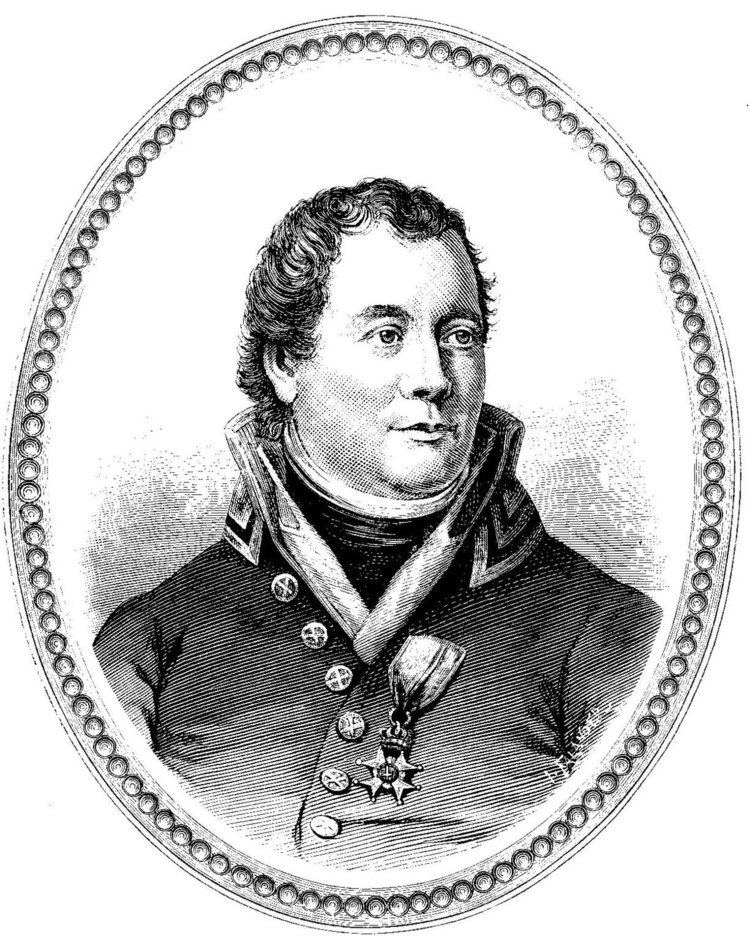Battles/wars Russo-Swedish War Rank Major general | Role Swedish Politician Name Georg Adlersparre | |
 | ||
Children Carl August Adlersparre, Rudolf Adlersparre | ||
Battles and wars Russo-Swedish War | ||
Count Georg Adlersparre (March 28, 1760 – September 23, 1835) was a Swedish army commander, politician and writer.
Contents

Biography
Adlersparre was born in Hovermo (now a part of Berg Municipality, Jämtland County). Having entered the army at the age of 15, he received from King Gustav III, in 1791, a secret commission to excite the Norwegians to rebellion. After the death of the king, he left the army and devoted himself to science. In 1797-1801, he published a periodical läsing i blandade Ämnen, and the liberal spirit in which he conducted it brought upon him the suspicions of the government.
In 1802, he was elected a member of the Royal Swedish Academy of Sciences.
In 1809 he joined the military campaign against Russia, and he unexpectedly received the command of a part of the so-called western army, and was shortly afterwards promoted to the post of lieutenant-colonel. He was engaged in the conspiracy with Carl Johan Adlercreutz against Gustav IV Adolf and triggered the revolution of 1809 by marching with his army to Stockholm. He received the thanks of the Riksdag and he was granted several honors that eventually included the title of count; he was governor of Skaraborg County from 1810 until 1824 when he resigned. Having received the command of the army from the new government, he was commissioned to excite the Norwegians against Denmark, in which he was unsuccessful.
After the sudden death of the crown prince he retired from public life, but still continued to receive marks of royal favor, notwithstanding the liberality of his sentiments. In 1831 he was involved in a controversy for publishing secret state documents and his private correspondence with various Swedish princes, actions for which he remained unrepentant (he continued publishing more papers). In 1824 he retired from public life and took stable residence in Gustafsvik Manor in Kristinehamn Municipality, Värmland, where he died in 1835.
Family
In 1809 he married Lovisa Magdalena Linroth (April 20, 1784 – November 8, 1866 Kristinehamn Municipality, Värmland). They had four children:
